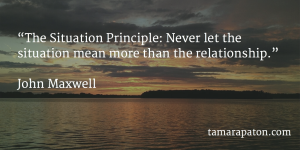

When I first reported to a board, management delivered the pre-reading material to directors with a loud thunk. There were no iPads in the boardroom back then. We kicked it old school with thick binders and countless dead trees.
Today, I receive my required reading via email or online portals. Technology hasn’t changed my first step, however, as I open the package and wince over the page count. A light meeting may involve 200 pages of prep, and a year-end review often exceeds 500. Sometimes I close the document, reopen it, and hope that the page count has changed.
Even if your board packs carry less heft, opening the binder can feel daunting. In my early years as a director, I would read through the materials sequentially and hope for insight to jump off the page. Board meeting preparation was an intimidating task, one that lacked guidelines and a sense of completion. I read each page and then returned for a second or third review, always wondering how my colleagues made it look so easy.
It turns out that practice makes perfect. Or at least progress. I’ve read more than 150 board binders in the past seven years and have honed the task down to 3 key activities. If you feel bogged down by preparation, consider the following your homework assignment prior to your next meeting.
Orient yourself
Before diving into the detail, set up for efficient work.
- Read the last meeting’s minutes. Where were we three months ago?
- Review this meeting’s agenda. What are the big issues?
- Skim the consent agenda — the documents that are presented for review, but not discussion. Has management buried an important topic?
Finally, set up a few blank pages for notes: one page to track clarifying questions, one for broader issues, and a third for insights you didn’t have prior to reading the material. The new insights come in handy while chatting over dinner or coffee. Management loves hearing how their work is changing directors’ perspectives on the organization.
Dive in
Now that you have oriented yourself, it’s time to roll up your sleeves. To make efficient work of several hundred pages, allocate your time and attention in line with the minutes allocated on the agenda. Assuming your chair organizes the meeting well, a 20-minute strategic discussion deserves more detailed study than a five-minute policy item.
For each topic on the agenda, ask whether you understand how this piece of the organization works. When you review something that requires a board decision, assess your understanding of both the proposal and what the argument against it might be. For extra credit, sift through the materials to differentiate fact from speculation. Boards will never have complete information, but it helps to have a sense of what management knows and what they think they know.
Craft the story
As you review the materials, populate your lists of questions. Stopping there is a rookie move, however, and one that can lead you into the managerial weeds. Instead, scan your notes and find connections across agenda items. Stepping back will help you identify two or three key messages you wish to convey in the meeting.
For each of these messages, draft a few questions that can open up discussion. Ideally, you are trying to offer a platform upon which other directors can build a line of inquiry. Encourage dialogue with open-ended questions. (e.g., “Why do you think customers are responding well to this initiative?”). Test assumptions (e.g., “How would our outlook change if we assumed X instead of Y?”). Consider your follow-up moves by anticipating management’s potential responses.
When time permits, I close my preparation with two bonus moves. First, I invest an additional hour in the consent agenda. Most directors skim these pages, but they often hold hidden gems. If you reference a factoid hidden in consent, you may highlight something that your colleagues missed. Next, I take my best guess at the most controversial topics on the agenda and reflect on how I might steer a tense discussion back into positive territory.
It never hurts to become known as a director who retains key details or knows how to right the ship. And it pays to develop a practice that lets you do all of this efficiently.
Question: What do you do in advance of a board meeting? Do you have tips for others looking to prepare well and efficiently?
Please share your response via Twitter, LinkedIn or e-mail.
Thank you for reading! If you found this post useful, please click the “like” button on LinkedIn and/or share it with others in your network. Doing so helps my work reach others and would mean so much to me.









